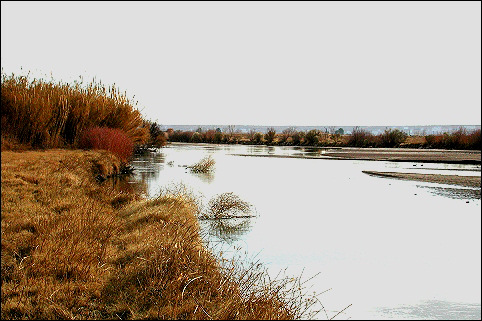

The Rio Grande—life-blood of its region! For millennia, life has depended on it for food, water, and irrigation. But consider the trip this great river takes—and its fate over the years.
With headwaters in Colorado, the river travels through three states before reaching the international boundary. Each state is limited in the amount of water it can use—the rest must be allowed to travel to those downstream. Dams and channels have been built to force the river to conform to our will. Before the Rio Grande reaches the Gulf of Mexico, all its original waters have been depleted. Only the input of the Rio Conchos assures that any water empties into the Gulf.
In battling nature for control of this mighty river, we have lost much
of its bounty. Once full of life, the river now supports few species. Dams help control
water but increase evaporation. Our water-starved region has lost much of its
life-blood to human intervention, pollution, and even our laws and treaties. How long
before Mother Nature reclaims what is hers?

Listen to the Audio (mp3 format) as recorded by KTEP, Public Radio for the Southwest.
Contributor: Elaine Hampton, Associate Professor, Department of Teacher Education, University of Texas at El Paso.
Desert Diary is a joint production of the Centennial Museum and KTEP National Public Radio at the University of Texas at El Paso.

Rio Grande at Canutillo, TX. Photo by A. H. Harris. ![]()